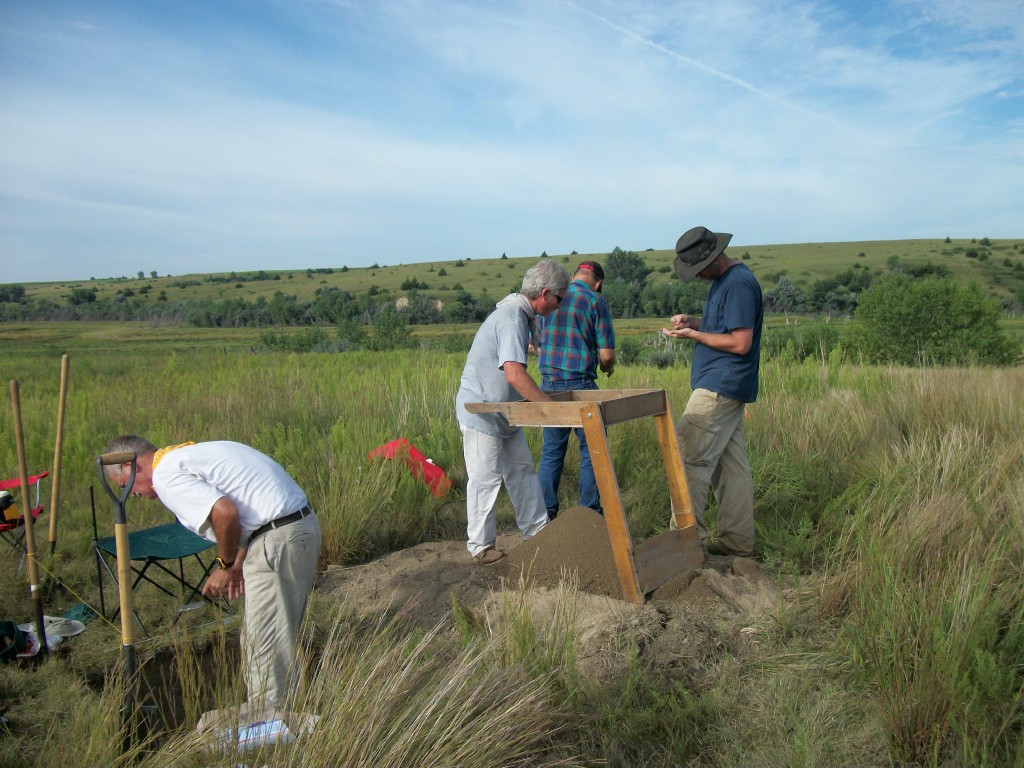
The University of Nebraska State Museum's Nebraska Archaeological Survey began archaeological investigations at several prehistoric sites at Red Willow Reservoir (Hugh Butler Lake) in Frontier County, Nebraska, in September.
Support for this field work, which will continue seasonally through 2015, is provided through a grant from the Department of Interior's Bureau of Reclamation under a new five-year cooperative agreement with the UNL. These investigations will enable archaeologists to assess the scientific potential of cultural resources within this area of the Great Plains.
Nebraska Archaeological Survey is directed by Alan J. Osborn, Research Associate Professor and Curator of Anthropology at the State Museum. Bruce Jones, who previously worked as an archaeologist for the National Park Service, is the assistant field director. Crew members include archaeological consultants Bill Altizer who received his Master of Arts degree in anthropology at the University of Nebraska-Lincoln and Steve Reynolds who has worked for six years on the University of Nebraska-Omaha's Bethsaida Project in Israel.
Test excavations are being conducted at five prehistoric archaeological sites within the boundaries of Red Willow Reservoir. This testing program is built upon recent archaeological surveys within the reservoir area carried out by the Nebraska Archaeological Survey in 2007 and the Denver Museum of Nature and Science in 2005. The sites chosen for investigation probably range in age from 700 to 5,500 years before present. The reservoir is managed jointly by the Nebraska Game and Parks Commission and the Bureau of Reclamation.
"The purpose of this program is to obtain sufficient information about these archaeological resources in order to evaluate their scientific potential for further research and to make recommendations to the Bureau of Reclamation for protecting these sites in the future," said Osborn.
Past archaeological investigations at Red Willow and Medicine Creek Reservoirs as well as neighboring lands administered by the Bureau of Reclamation have made significant contributions to our knowledge and understanding of Native American life throughout the Great Plains region. The Nebraska Archaeological Survey is an important part of the museum's archaeology and anthropology program.
Osborn is Research Associate Professor and Curator of Anthropology in the Nebraska State Museum. His research interests include Paleoindian adaptations, the Younger Dryas Cold Event, poison hunting strategies, and prehistoric ceramics and cooking technology. He teaches courses for both the Great Plains Studies Program and the Department of Anthropology. As part of the museum's "Sunday with a Scientist" series for children and families, he will discuss his research about "killer beans" and innovations in prehistoric Pueblo cooking technology on the Colorado Plateau Nov. 21 from 1:30-4:30 p.m. at Morrill Hall.
More details at: http://go.unl.edu/6cq